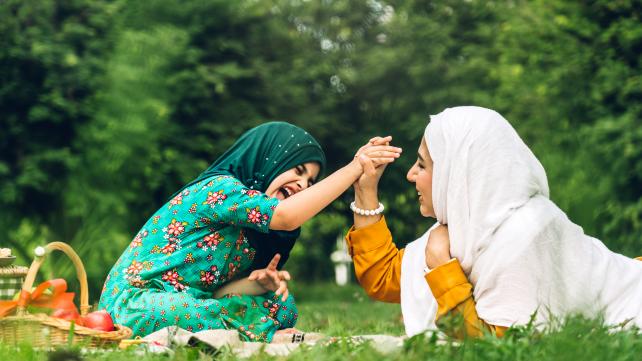
Self-regulation refers to the management of our own behaviors, body movements, and emotions. These skills are important at any age and are especially necessary to ensure that children are able to participate and gain from any learning environment. They are equally important to addressing the challenges of everyday life.
In comparison to adults, self-regulation in children can look rather different. It is important for us, as parents, to understand what self-regulation looks like from a child’s perspective. Here are six common determinants of self-regulation in children.
Move toward independence: As children grow, they begin to display their choices and communicate preferences more openly (for example, which clothes to wear on a certain occasion, what games to play, who to play with and at times even whom to stay away from). These decisions are made based upon their own observation, assessment, and analysis.
Therefore, we must continue to support them in making decisions for themselves, wherever possible without snubbing them or disregarding their feelings altogether.
Ability to communicate wants and needs: This typically happens when children acquire language skills and begin to verbally communicate their needs to an adult (think expressing hunger, needing to use the bathroom, etc.
This is a positive sign, which suggests that the child can somewhat express themselves and, more importantly, share their feelings using speech.
Inquisitiveness: This relates to being enthusiastic and curious in approaching new things. For instance when trying out a new skill like cycling, balancing on a beam or figuring out the missing piece of a puzzle.
Parents can nurture and reinforce these skills by creating opportunities for active experimentation or letting children figure out things for themselves in a safe environment.
Recognition of boundaries: As children grow older, they naturally begin to show an understanding and awareness of boundaries for social interaction and gain a sense of understanding and respect for rules and limitations. For example, a child may express his/her sadness when told that playtime is over, but at the same time they also understand the need to get back home to finish homework, eat dinner, and go to sleep on time.
It is critical to understand here that having to bribe children into agreeing to do something for themselves, is an indicator of poor establishment of boundaries. And, this lack of awareness can have serious implications on their emotional well-being and maturity into the future.
Ability to follow instructions: This is connected to the establishment of healthy boundaries and also concerns an understanding of the cause-effect relationship.
When a child understands what disruptive behavior looks like and, more importantly, its consequences, it depicts a good amount of emotional resilience and self-regulation practice.
Show of Empathy: Although young children may not grasp the subtleties of knowing what empathy is, they sure are capable of being sensitive toward the feelings of others. You may witness this at the playground when your little one takes a leap to help a friend who might be struggling to get on a swing. Praising them for showing kindness undoubtedly serves as a positive reinforcer!
Details Are Important
Working on improving a child’s ability to self-regulate is all about making a connection to emotions, how they are feeling and thinking. It does not mean trying to shut down negative emotions and replace them with positive ones, however. In fact, it is helpful to resist the urge to label emotions as either “good” or “bad.”
Humans tend to adjust our reactions to any given situation based on the emotions that surround it. Our sensitivity to others’ response and reactions play out most intensely in our most important relationships. And the parent-child relationship is one of those. Think about how a rambling toddler responds when they fall down. They look around to see how others respond. If his mother runs toward him, scoops him up, checks out every limb, he becomes hysterical. If she instead remains calm, quickly assesses that there is no real injury and says, “you’re ok, keep playing,” he will get up, maybe even laugh, and toddle on ahead. For an adult analogy, think about flying in a plane and hitting turbulence. The fasten seatbelt signs blink on. In response, your stomach sinks and you feel danger pangs. But when you look at the steward and he is calm, you reassure yourself that this, too, will pass.
Emotions Have a Biologic Bases
There is a biological bases of our emotions. Increased knowledge of these facts can help us better understand how our presence impacts others in either a calming or disquieting manner. This is especially important for parents as we support our children to develop their self-regulation skills over time. And patience is necessary at every juncture. Sometimes it is easier to muster when children are young and learning basic skills because we don’t have expectations that they can manage on their own. But it is even more important to approach challenges with patience during adolescence. At this developmental stage, the part of the brain that drives emotions is developing rapidly and the part of the brain that drives decision making and planning - the cerebral cortex - lags slightly behind. This is the same area of the brain that is involved in processing and often calming emotions. Add hormonal changes to the mix and it is easy to see how frustrations and anxiety can rage and matters come unraveled quickly.
There are a number of terms worth reviewing that are rooted in the science of human connection and stress responses.
Self-control is the capacity to pause before thinking or acting. It is about whether we can control impulses.
Self-regulation is the layer beneath self-control. It is about the emotional state that determines whether we can move beyond our initial reaction, especially if a situation is upsetting. It is about being able to pay appropriate attention, maintain focus, and handle the task at hand.
Dysregulation is when we are so aroused, vigilant or troubled that we are unable to become settled. In a dysregulated state, we are more likely to be reactive, anxious, impulsive, hostile or out-of-control.
Co-regulation is the calming presence of another person. It is a kind of interpersonal emotional feedback loop that contributes to a person being able to self-regulate. The flipside is also true - that a disruptive presence adds to the stress load.
Higher brain functions are those capacities we have to remain thoughtful and reflective. These functions are housed in the cerebral cortex and enable us to naturally think through situations and plan for the future. They are called higher brain functions both because they are the most advanced part of our brains and because they can control the lower - more instinctual, reactive, emotion - parts of the brain. This is not automatic, however, and these skills must be developed.
Lower brain functions or the limbic system (most notably the amygdala) are essential to our survival as it scans for danger and allows us to instinctually respond to potential threats.
Stress load is the amount of stress a person is managing at any moment. It affects whether our higher or lower brain functions dominate.
Toxic stress, trauma or chronic adversity all refer to life circumstances that a young person may have endured. These stressors change the brain’s development to make the limbic system and amygdala particularly responsive to environmental cues.
Supporting Self-regulation Skills
It is important for parents to have a road map that can be used to encourage mastery of self-regulating skills. When you notice a frustration, struggle, and/or stress, you can use these steps to move forward in a more productive and positive manner.
1. Notice, assess, and inquire.
For the parent, this involves noticing the problematic behavior and assessing the child’s ability to self-regulate and problem solve on his/her own. This will include naming the emotions you see (check out the feelings wheel), inquiring about them, and giving the child an opportunity to explain them as well. Here it is important to encourage the child to share and to listen attentively.
2. Actively listen.
There is no way to overemphasize the importance of listening to our children. It will take time and effort. And there can be obstacles that we put in the way of this initial and important step including:
- Mixing our own emotions with the emotions of our child. Not everything is looked at the same way from different perspectives.
- Jumping in with the solution before the child gets a chance to move forward to identify strategies on his/her own.
- Allowing our own impatience with silence to thwart a child’s struggle to explain or choose the right words. It will always take time to communicate openly and honestly.
- Resisting the work involved because of our own discomfort with mistakes. We all make them and they can be tremendous opportunities for learning from natural consequences. In these instances, instead of letting our children think things through, we correct their ideas and tell them how to prevent or correct mistakes.
- Saying the right words but undermining them with body language that says otherwise. If you are making time to listen, have a seat, eliminate distractions, avoid defensive postures (folded arms, finger tapping, leg shaking, etc.), and manage your facial expressions wisely. Your children are paying very close attention!
- Taking things personally, escalating or retaliating when children express their feelings honestly.
3. Identify tools that encourage reflection and resolution.
There are several suggestions that can help parents and children move to the next step together.
- Take a breath, quite literally, to calm the situation.
- Break the problem into manageable pieces.
- Develop strategies for problem solving in the present.
- Weigh options that show respect for others, for property, for our environment, and are in line with Islamic guidance.
- Give examples of people who have made mistakes and taken steps to learn from them.
4. Set the stage for practicing resilience in the future.
Building trust, nurturing new skills, accepting and learning from mistakes, creating opportunities for increased communication, and strengthening our family ties are all ways to help children build self-regulation and resilience skills that they can depend on in the future. Be sure to give a hug or also show signs of affection. These are easy for cute babies and young children who act in a loving way toward us. But they are equally needed for our teens who seem rebellious. The reminder that we love them and are in their corners for the long haul is invaluable.
As parents, educators and rightful guardians of our children we must put in the work in the early years in order to support our children to grow into resilient adults, inshaAllah. Self-regulation is important at any age and it’s important that we, as parents, take an active role in strengthening these abilities not just for our children, but for ourselves as well. It takes a great deal of practice, perseverance and motivation (intrinsic) to self-regulate our emotions and to help our children do the same. And this does not happen overnight!
Here are some great books to enhance your understanding and improve your listening skills.
How to Talk So Kids Will Listen, and How to Listen So Kids Will Talk by Adele Faber and Elaine Mazlish (there are many other books in this series for different ages and circumstances)
Parent Effectiveness Training by Dr. Thomas Gordon
Building Resilience in Children and Teens by Dr. Kenneth Ginsburg
Raising Self-Reliant Children in a Self-Indulgent World by H. Stephen Glenn and Jane Nelsen, EdD




Add new comment